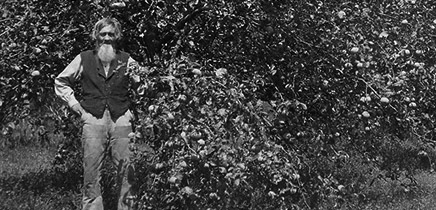Emile Julien Amblard, known as the “Duke of Clearwater Lake,” became one of Coney Island’s leading residents. He bought his first piece of land there in 1893. The western edge of the island and a building in Waconia would become his passion for the next twenty-one years.
Amblard was born in Paris, France on April 4, 1840. He was the son of a wealthy landowner and Mayor of the town of Périgueux, in Burgundy, France. Amblard spent his youth at the family’s country home in Burgundy and in Paris schools. As an adult, Amblard worked for F. Chauvenet and Company, distributors of fine French wine. As the company’s representative in the United States, Mexico, and Canada, a lot of Amblard’s time was spent traveling, introducing and importing Burgundy wines. After a yearlong absence to serve in the Franco-German War (July 19, 1870 –May 10, 1871) under Napoleon III, Amblard spent the rest of his days working for F. Chauvenet and Company.
He first visited the United States in 1889. The following year, Amblard visited an old friend, former German Army Officer Rudolph Steinmetz, who lived in Minneapolis. While there, Amblard was invited on a fishing trip to Clearwater Lake. He fell in love with the beauty of the area and stayed.
Emile Amblard purchased his first property on Coney Island in 1893 from Mary Orth, with an existing cabin. The following year, fifty-four-year-old Emile Amblard married twenty-two-year-old Mary Augusta Wood of Manitoba, Canada. The family, including Mary’s mother and Amblard’s daughter from a previous marriage, Marie Therésè, spent their summers on the island. In the winter, the women lived in their Summit Avenue home in Minneapolis, while Marie Therésè attended St. Joseph’s Academy. Amblard spent his winters traveling for work.
In 1898, Amblard bought more land on the island and built his main summer residence. Known as “Villa Emile,” the building was one story, with a two-story tower on one side and a veranda on three sides. The original property became known as Villa Marie, for his wife Mary. The Amblards also built Villa Topsy, a five-room guesthouse, named for their beloved dog. Over time, Amblard added a park, gardens, a boathouse, a bathhouse, a billiard room, a chess room, and gazebos. The area became known as Amblard Point and Amblard Park. When the 1904 Waconia Cyclone hit, it wrecked the boathouse, the boat landing, gazebo, and Villa Topsy. Villas Emile and Marie were left undamaged. In 1906, Amblard purchased a building on Vine Street in Waconia. Over time, he added an automobile garage, guest rooms above, and a dining room.
By 1911, Amblard’s health began to deteriorate, and the family was living mainly in their Minneapolis home. In 1912, Amblard spent weeks ill in the hospital and in 1913, he fractured his leg. Despite Amblard’s poor health, the family took a final trip to the Amblard home in Burgundy, then on to Paris, Nice, and Monte Carlo. In July 1914, Amblard entered the Swedish Hospital in Minneapolis for surgery; there were complications. Emile Amblard died in the hospital on July 15, 1914 at age seventy-four. Legend has it he wanted to be buried standing up, facing his beloved island, but he had a traditional burial in the Waconia city cemetery. His is the only grave in the cemetery facing the island (in a north-south direction), as all other plots face east to west.
Mary Amblard was the sole heir to his estate, but she had little interest in the land. The Coney Island property was sold to James R. Ferris of the National Hotel in Minneapolis and became “Frenchman’s Point.” The garage and club-house in Waconia were sold to James E. Hamilton of Janesville, Wisconsin, and became the “Waconia Tavern and Garage.” Mary sold the Minneapolis home and then lived in California, Belgium and France. She died and was buried in Winnipeg, Canada in 1946.
In the twenty-first century, no Amblard structures remain on the island. The club and garage in Waconia were placed on the National Register of Historic Places on January 4, 1980. They were converted, and are now the Wishing Well Apartments. Amblard’s passion for building lives on in that structure.
Turning Point: In 1890, Emile Amblard’s visit to Clearwater Lake inspired him to buy his first property on Coney Island.
Chronology:
- April 4, 1840: Emile Julien Amblard is born in Paris, France.
- July 9, 1870- May 10, 1871: Emile Amblard serves in the Franco-German War under Napolean III.
- 1889: Amblard’s first visit to the United States.
- 1890: Amblard visits a friend, former German Army Officer Rudolph Steinmetz, in Minneapolis. While there, he is invited to fish on Clearwater Lake in Waconia and falls in love with the beauty of the area.
- 1893: Emile Amblard purchases his first piece of land on Coney Island from Mary Orth, with an existing cabin.
- 1894: Fifty-four-year-old Amblard weds twenty-two-year-old Mary Augusta Wood of Manitoba, Canada.
- 1898: Amblard expands his property on the island and builds his main residence, Villa Emile.
- August 20, 1904: The Waconia Cyclone causes extensive damage to Amblard’s property on Coney Island.
- 1906: Amblard purchases a structure on Vine Street in Waconia, adding an automobile garage, guest house and dining room.
- 1911: Amblard’s health begins to deteriorate and he spends less time on the island.
- 1912: Amblard spends weeks ill in the hospital.
- 1913: Despite Amblard’s poor health, the family takes one final trip to the Amblard family home in Burgundy, then on to Paris, Nice and Monte Carlo.
- July 1914: Amblard enters the Swedish Hospital in Minneapolis for surgery; there were complications. He dies in the hospital on July 15, 1914. He is buried facing his beloved island in Waconia, Minnesota.
- 1946: Mary Amblard dies and is buried in Winnipeg, Canada.
- January 4, 1980: The clubhouse and garage located on Vine Street are placed on the National Register of Historic Places and converted in the Wishing Well Apartments.
BIBLIOGRAPHY
“A Crew of Men Are Busily Engaged on the New Addition to the Amblard Building.” Waconia Patriot, April 17, 1908.
Anderson, Keith, “Historic Waconia Building Welcomes Changes.” Carver County News, October 4, 1990.
“E. Amblard, A French Gentleman from New York.” Carver County News, May 25, 1894.
Holcombe, Maj. R.I., ed. Compendium of History and Biography of Carver and Hennepin Counties, Minnesota. Chicago: Henry Taylor and Company, 1915.
“Mons. Amblard Property is Sold.” Waconia Patriot, August 21, 1914.
“Mons. Emile Amblard Gone to His Reward.” Waconia Patriot, July 17, 1914.
“Mons. Emile Amblard Was here Tuesday.” Waconia Patriot, April 5, 1912.
“Monsieur E. Amblard.” Carver County News, August 8, 1890.
“Mr. Amblard Left Tuesday for Minneapolis.” Waconia Patriot, September 4, 1903.
“Mrs. Marie Amblard Dies in Canada.” Waconia Patriot, April 4, 1946.
Waconia Heritage Association. Waconia, Paradise of the Northwest: The Lake and Its Island. Dallas: Taylor Publishing Company, 1986.
“Waconia’s Most Progressive Citizen, Mons. Amblard.” Waconia Patriot, May 19, 1911.
“We Are Pleased to Note that Mons. Emile Amblard.” Waconia Patriot, April 11, 1913.
RELATED RESOURCES
Primary:
“Mary Wood Amblard Marries Ruppert H. Clarke.” Waconia Patriot, February 20, 1919.
“Mons. Amblard Opens Public Park.” Waconia Patriot, June 20, 1913.
“Monsieur Emile Amblard.” Waconia Patriot, January 17, 1908.
“Waconia Now Has a Magnet for Motorists in the Shape of a Handsome Clubhouse.” Waconia Patriot, May 15, 1908.
Secondary:
Carver County: Today and Yesterday. Compiled by the Carver County Statehood Centennial Committee, 1958. A pamphlet.
Lofstrom, Ted and Lynne VanBrocklin Spaeth. Carver County: A Guide to Its Historic and Prehistoric Places. St. Paul: Minnesota Historical Society Press, 1978.
Millet, Larry. Once There Were Castles: Lost Mansions and Estates of the Twin Cities. Minneapolis: University of Minnesota Press, 2011.
Tremblay, Ruth and Lois Schulstad. Images of America: Carver County. Charleston, South Carolina: Arcadia Publishing, 2011.
Warner, George E. and Charles M. Foote. History of the Minnesota Valley: Carver County. Reprint. Carver County Historical Society, 1986. Originally published in George E. Warner and Charles M. Foote, History of the Minnesota Valley, Minneapolis: North Star Publishing Company, 1882.
Web:
National Register of Historic Places. Minnesota- Carver County. http://www.nationalregisterofhistoricplaces.com/MN/carver/state.html
Go Historic. Emile Amblard Guest House, Waconia. http://gohistoric.com/sites/emile-amblard-guest-house-waconia
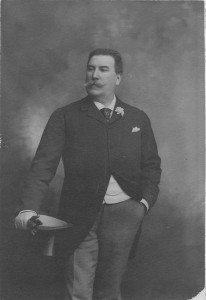
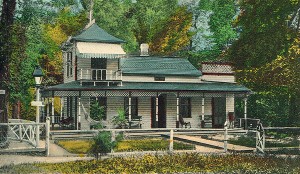
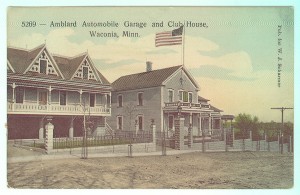
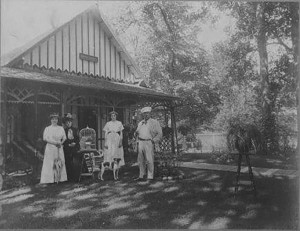
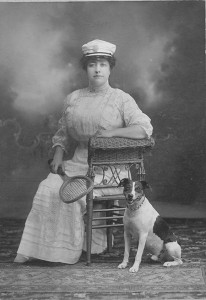
“This article used with the permission of MNopedia, operated by the Minnesota Historical Society, under a Creative Commons License. No changes have been made to the article’s content.”

